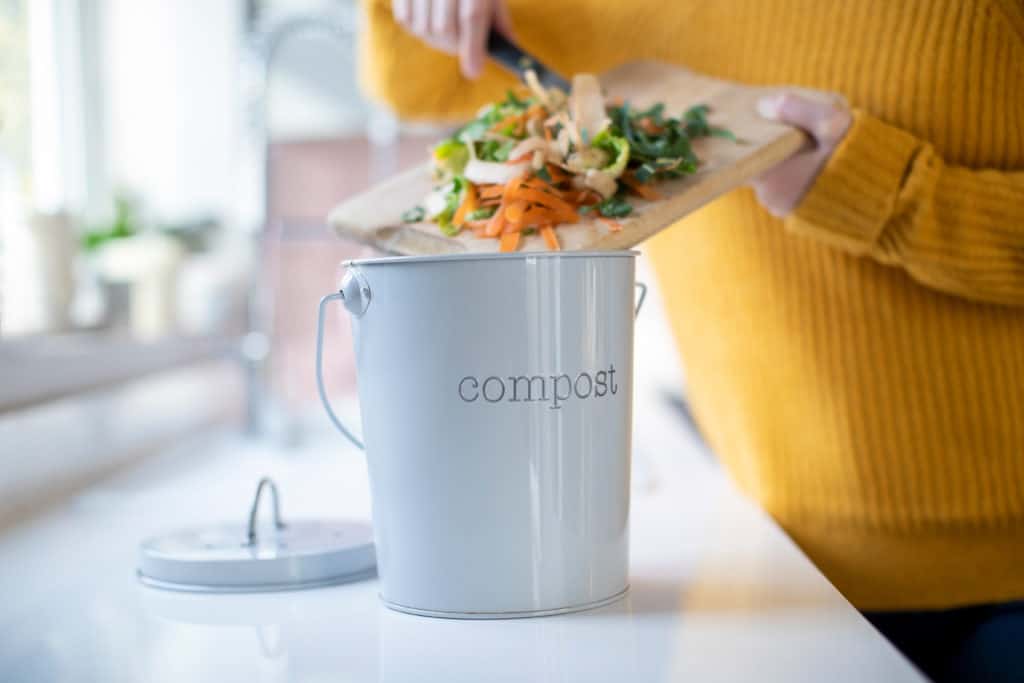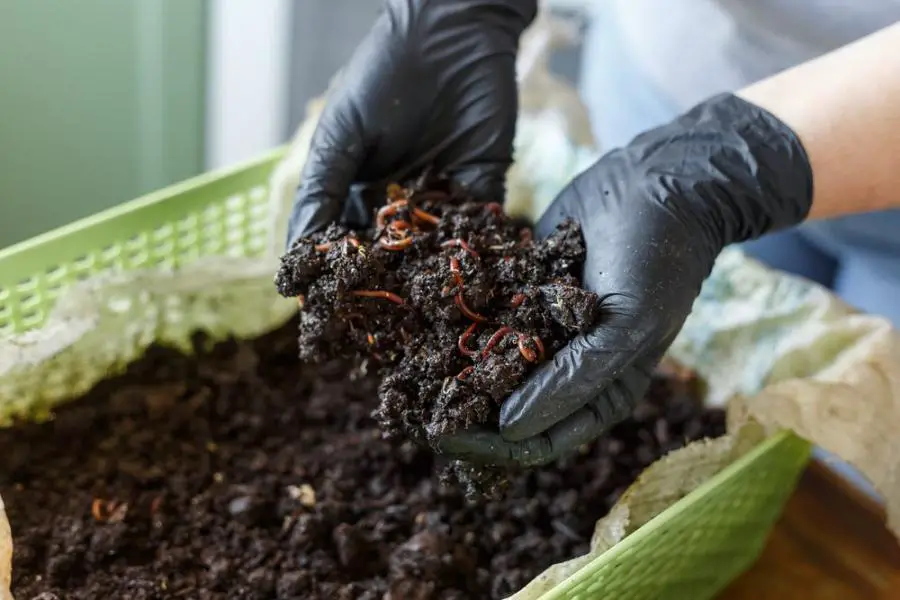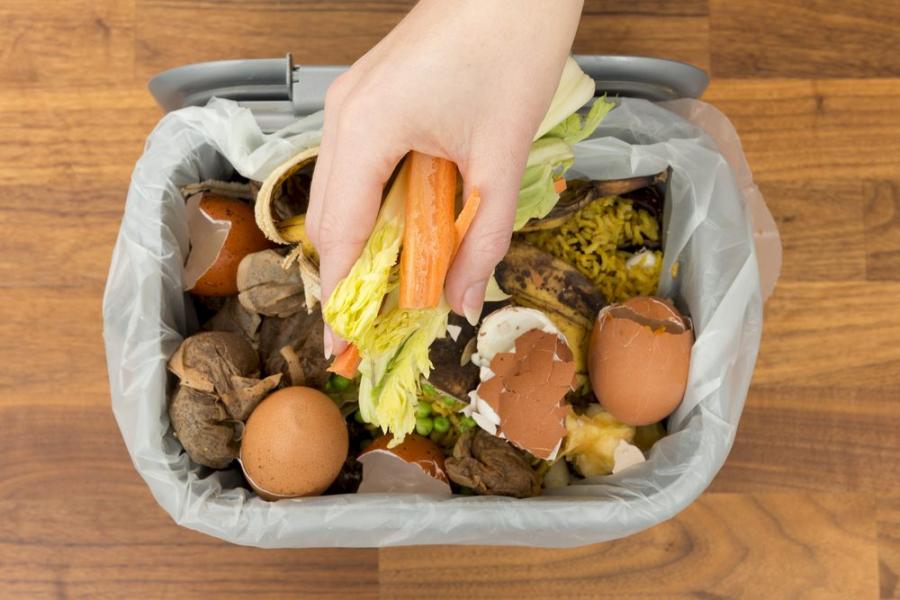Suppose you are looking to start indoor composting. Congratulations! You are in the right place to get all the insider scoop on creating and keeping a successful indoor compost project!
When you start composting, it can feel like there are so many rules and guidelines to follow, so many people telling you different things, and a confusing number of composting options. That is why we are here, to gently guide you through making the indoor compost that works best for you and your lifestyle.
Indoor Composting should not cause problems or stress in your life, and we want to ensure that you have a great experience with starting your compost. We also want to make sure that you can sustain your indoor compost and keep it flourishing!
So without further ado, let’s begin!
Types of Indoor Composting
There are two main methods for indoor composting. These methods are aerobic composting and vermicomposting. Do not be afraid of the big words. We will explain!
Aerobic composting is how food gets composted using microbes from garden soil that convert organic materials, like food scraps, into compost that can be used as fertilizer for your garden and houseplants! Aerobic composting is when organic matter is decayed into nutrient-rich soil using microbes found in dirt from gardens.
Vermicomposting is very different but has the same outcome. Vermicomposting is the process where worms and microbes turn organic waste and food scraps into soil! The worms eat the old food and other pieces of organic matter, and their manure (also called worm castings) is the new soil.
These composting systems produce soil with lots of nutrients, nitrogen, potassium, and phosphorus, which are all great for houseplants and gardens! Vermicomposting can often retain more water during the process, making the soil a little better, but the two are not vastly different.
The first step is to pick which kind of indoor composting you want. Both are low maintenance and easy to keep up with. Once you decide which you will be using, you can pick a container for your compost!
Indoor Composting Bins

For indoor composting, you do not need to buy one of those substantial composting bins that you see outside or in public gardens. All you need for either method is a large, 18-gallon plastic storage container with a lid. If you have a smaller house or less food waste, try a 5-gallon or a 10-gallon plastic container.
You can also use garbage cans with lids, wooden crates with a makeshift lid, or other containers that you can close. Make sure that the container you pick fits the space you want to keep it in and has enough room to receive food scraps weekly plus more.
Both methods of composting need air to work. Whatever indoor composting bin you decide on, drill around 30 holes in the lid in an evenly-spaced grid format. Next, drill another 30 evenly-spaced holes into the bottom of your compost bin. Find a drain tray that is around 2 or 3 inches tall and can be placed underneath your compost bin so that it catches any drainage from the bin.
The drainage tray or bin can be removed, emptied, and cleaned so that it does not create a smell in your home. You should also drill two rows of air holes on either side of the compost bin, about an inch apart.
What You Can Compost
Your compost will be a wild recipe of green and brown matter. The green matter is all your food waste, organic waste like grass clippings and dead plants. The brown matter is molecularly based on carbon, so cut up newspaper, small pieces of cardboard, and dead leaves.
These two types of matter should be in a 3 to 1 ratio: three parts brown matter to one part green matter.
When you prep your compost bin to begin indoor composting, you should fill about 75 percent of the way with some lightly dampened brown matter. Not dripping wet. Otherwise, your bin will have a lot of liquid drainages. Aerate the brown matter by softly moving it around the bin.
Next, you put an even layer of garden soil over the top.
Aerobic Composting
If you are aerobic composting, you need to bury your first food waste scraps in the bin by digging a small hole in the soil layer. Place the lid back on and allow the composting to begin.
What to Compost in an Aerobic Compost Bin
You can compost green and brown matter like raw fruits and veggies, fruit and veggie peels, lawn cuttings, dead houseplants, tea leaves, coffee grounds, crushed eggshells, compostable coffee filters, dead leaves, tea bags, wood chips, small sticks, nutshells, hay, straw, shredded newspaper, small pieces of cardboard, and cotton.
You cannot compost any cooked food, bones, meat, fish, fat (like butter and animal fat,) or dairy. These items will attract animals to your compost bin, which is not good.
Vermicomposting

For worm composting, you will put one pound of Eisenia Foetida or Lumbricus Rubellus red worms for every 3.5 pounds of organic and food waste your family produces per week on the layer of soil. So if you produce around 10 pounds of food waste per week, you would want about 3 pounds of worms.
You can order these worms online or find them at local gardening stores. An important reminder: keep the lid on your compost bin nice and tight to prevent your worms from escaping because they can and will try to wiggle their way out.
Over the week, gather your food scraps in a separate container. Do not freeze or refrigerate it because the worms will not love that. Once a week, you will dig a small hole in the compost bin and add that week’s scraps. Put the lid back on, and your compost is ready to start! All the scraps that are safe for aerobic composting are also safe for worm composting.
Happy indoor composting!
